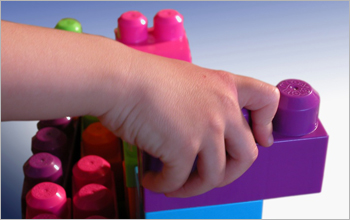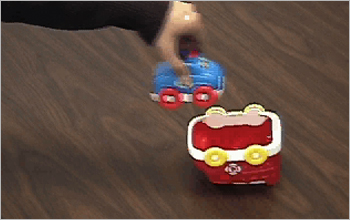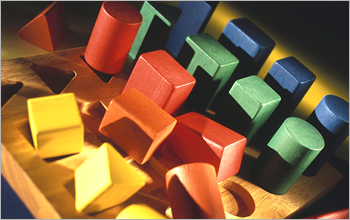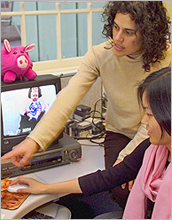All Images
Research News
Understanding the Building Blocks of Language and Thought

Casasola's research shows that language input from caregivers, as well as babies' own play behaviors, helps babies comprehend spatial relationships such as "in" and "on."
Credit: Photos.com

Instead of "in" and "on," Korean-learning babies learn the similar (but not quite parallel) concept of "tight-fit" or "kkita" by snapping together tight-fitting toys like Duplos™.
Credit: Photos.com

One of Casasola's research methodologies involves showing babies video examples of containment ("in") and observing their responses. Between 10 and 18 months of age, babies do not yet recognize the commonality between different examples of containment ("in") or support ("on"), but seem to grasp the concepts based on the language used to describe the spatial relationship.
Credit: Marianella Casasola and Garin Danner

With this type of toy, English-learning toddlers learn the concept of "in" while Korean-learning toddlers learn the concept of "tight-fit." In research to discover whether English-learning toddlers could think like their Korean-learning counterparts, Casasola found that babies as young as 18 months old are flexible in their learning and can adapt to new language patterns, apply a different type of word and organize concepts according to different bases.
Credit: Photos.com

Casasola (left) with student Geunwon Kim. Casasola involves graduate and undergraduate students in her studies to train them in a variety of research methodologies that will help them become strong, independent researchers.
Credit: Cornell University Photography. Photo by Kevin Stearns.


